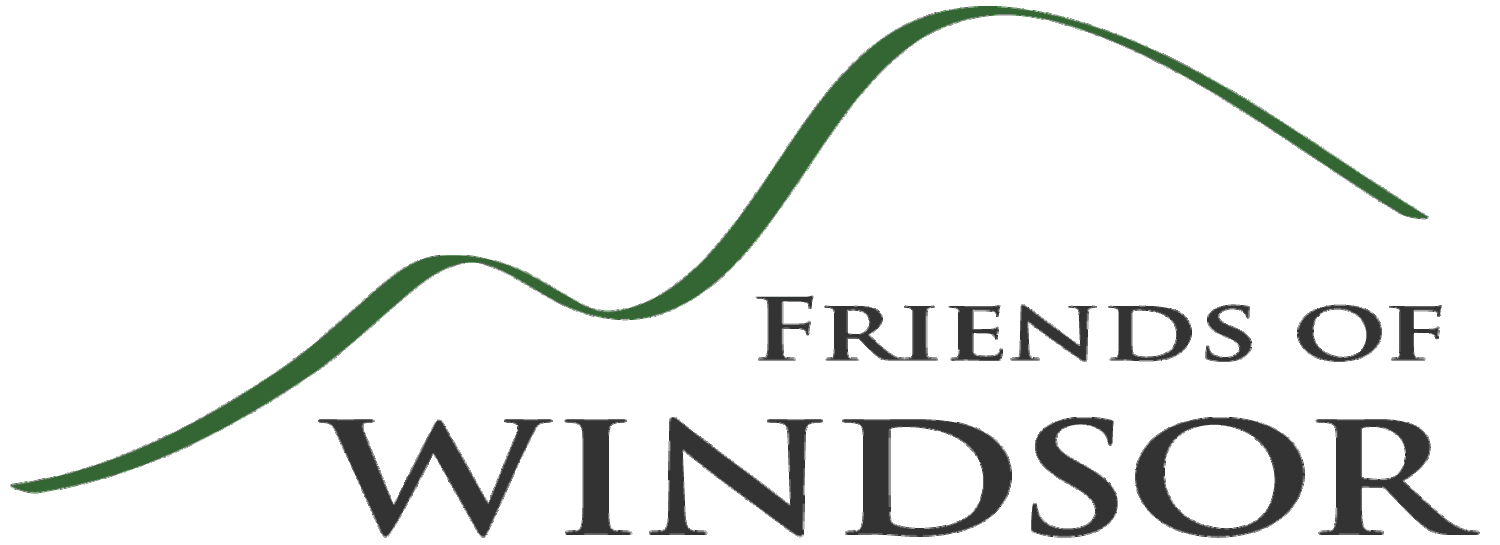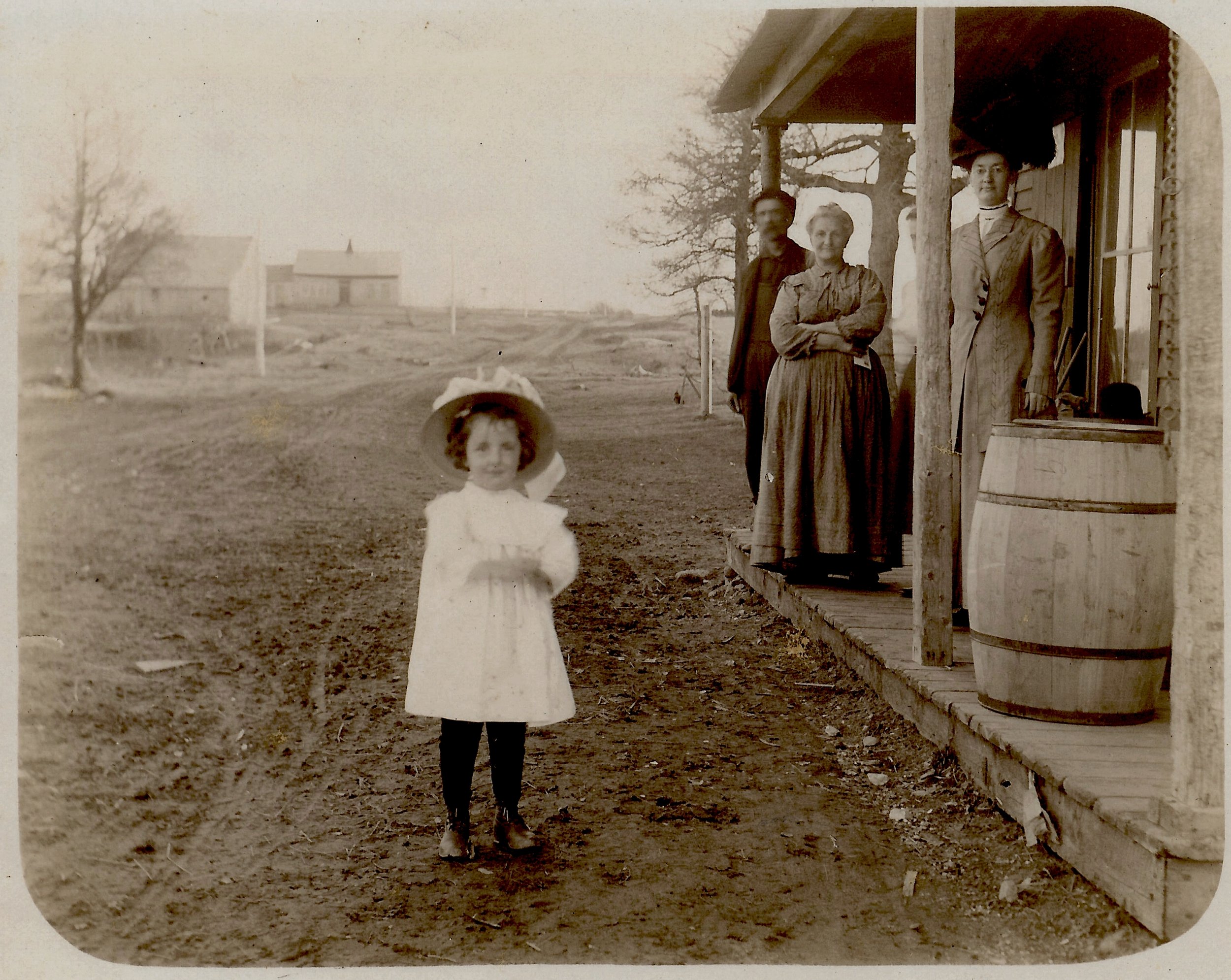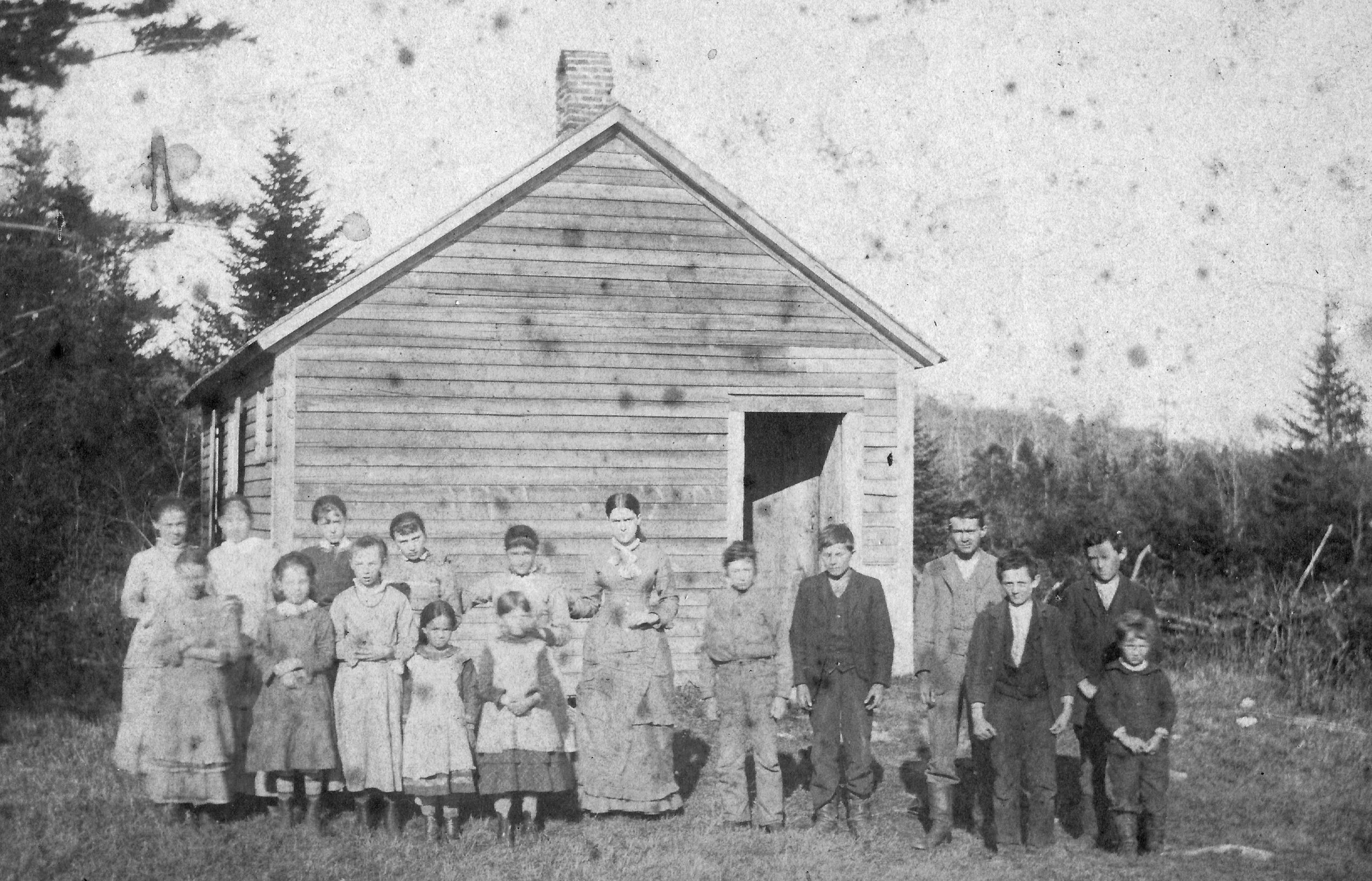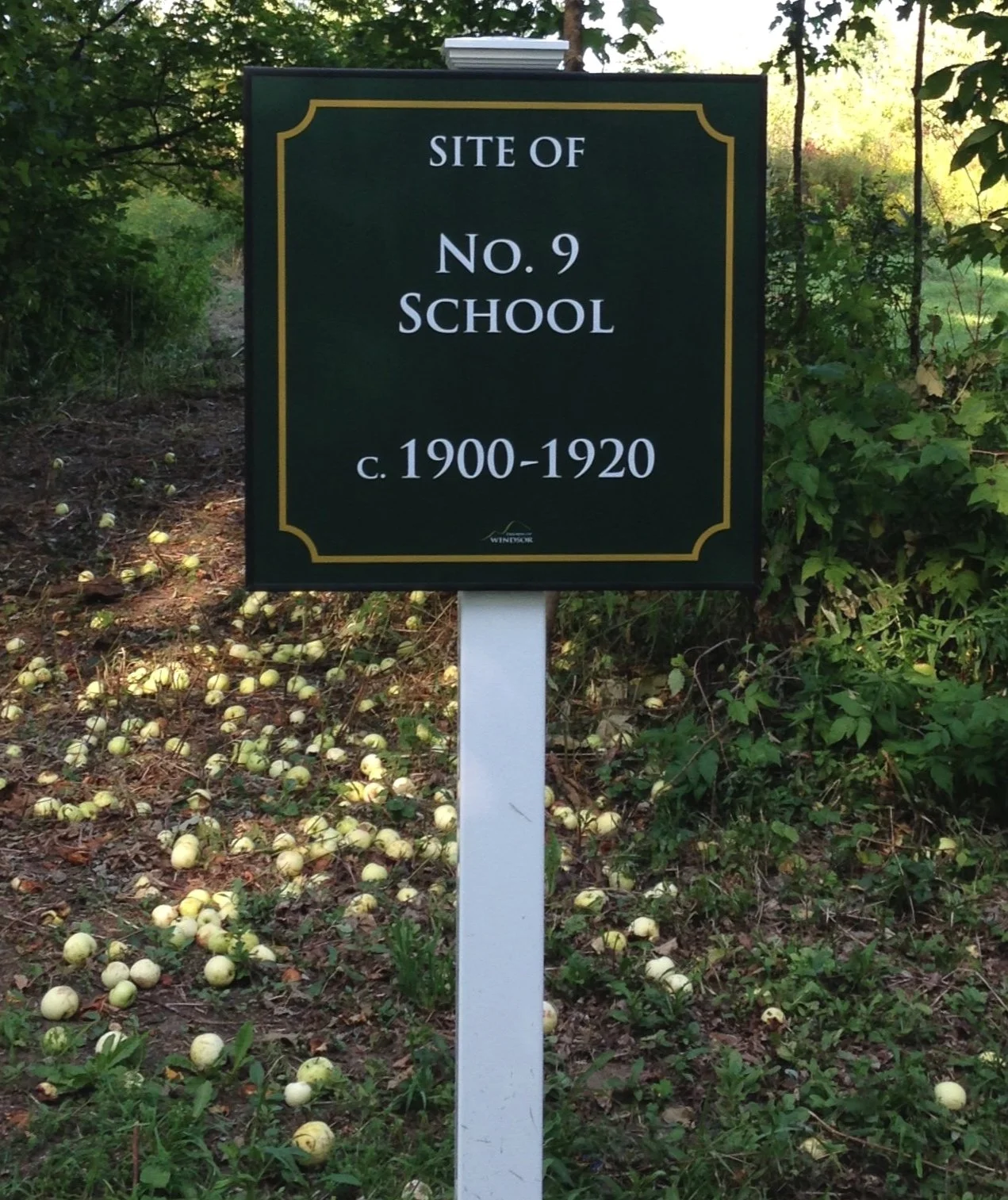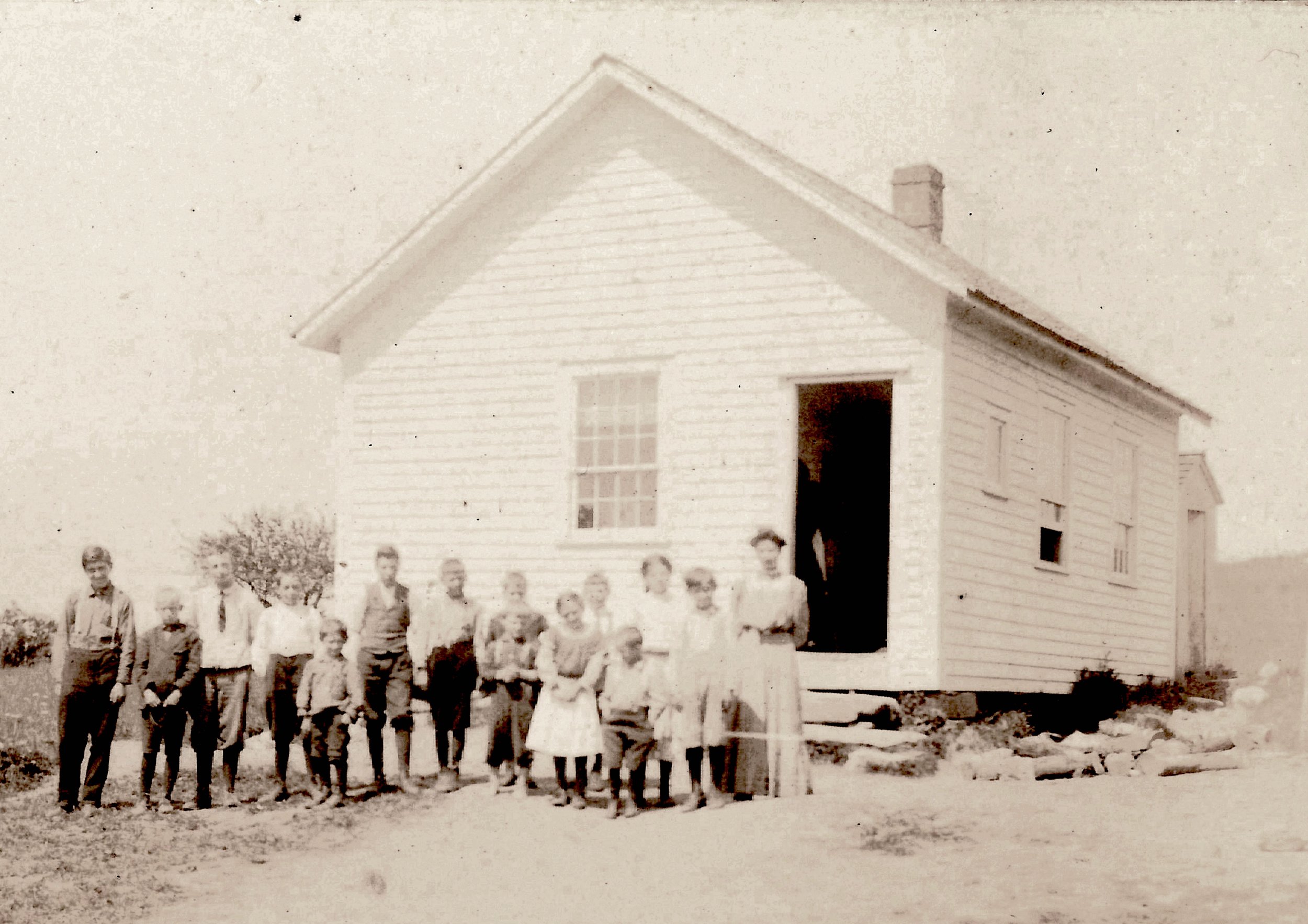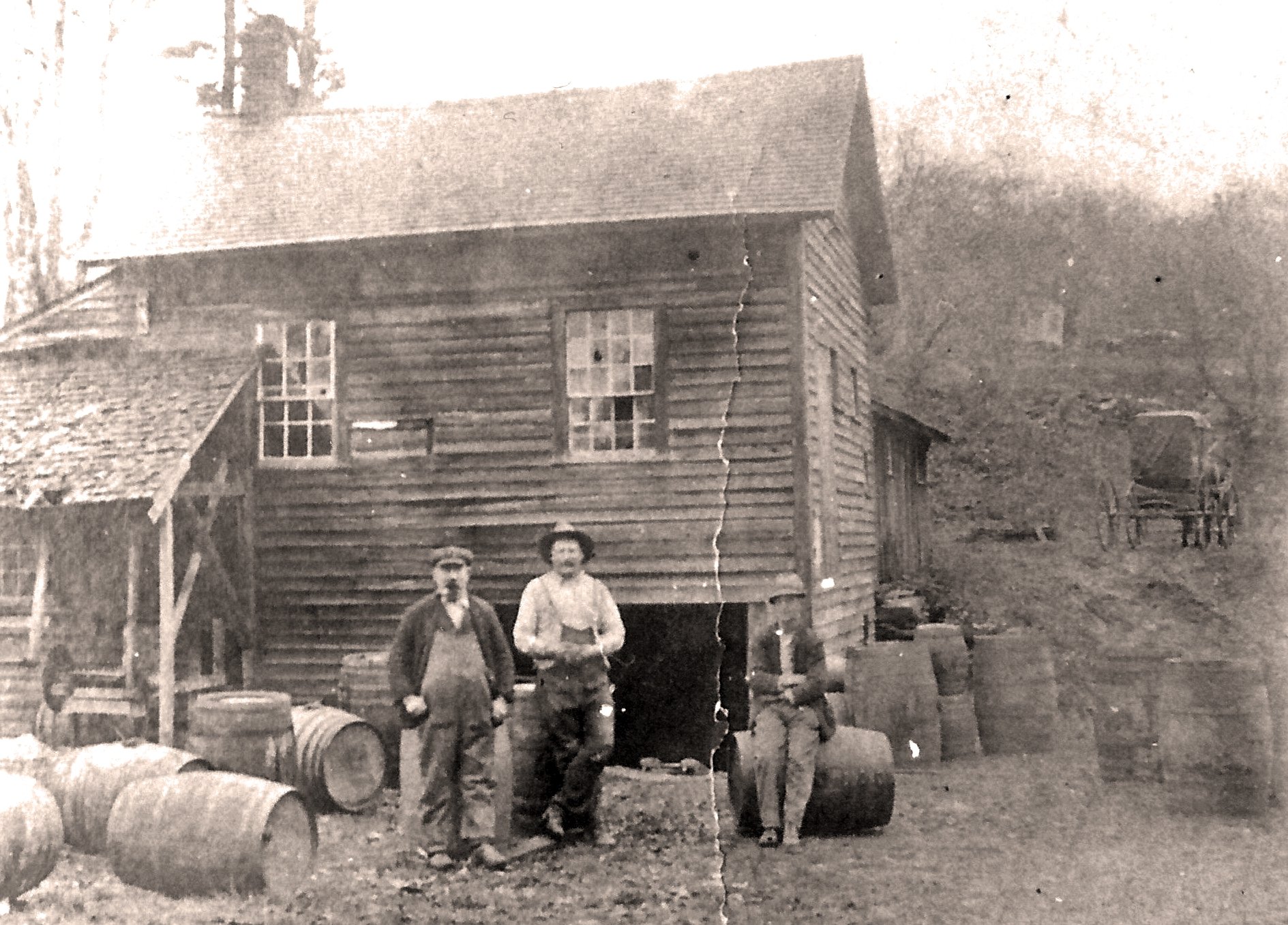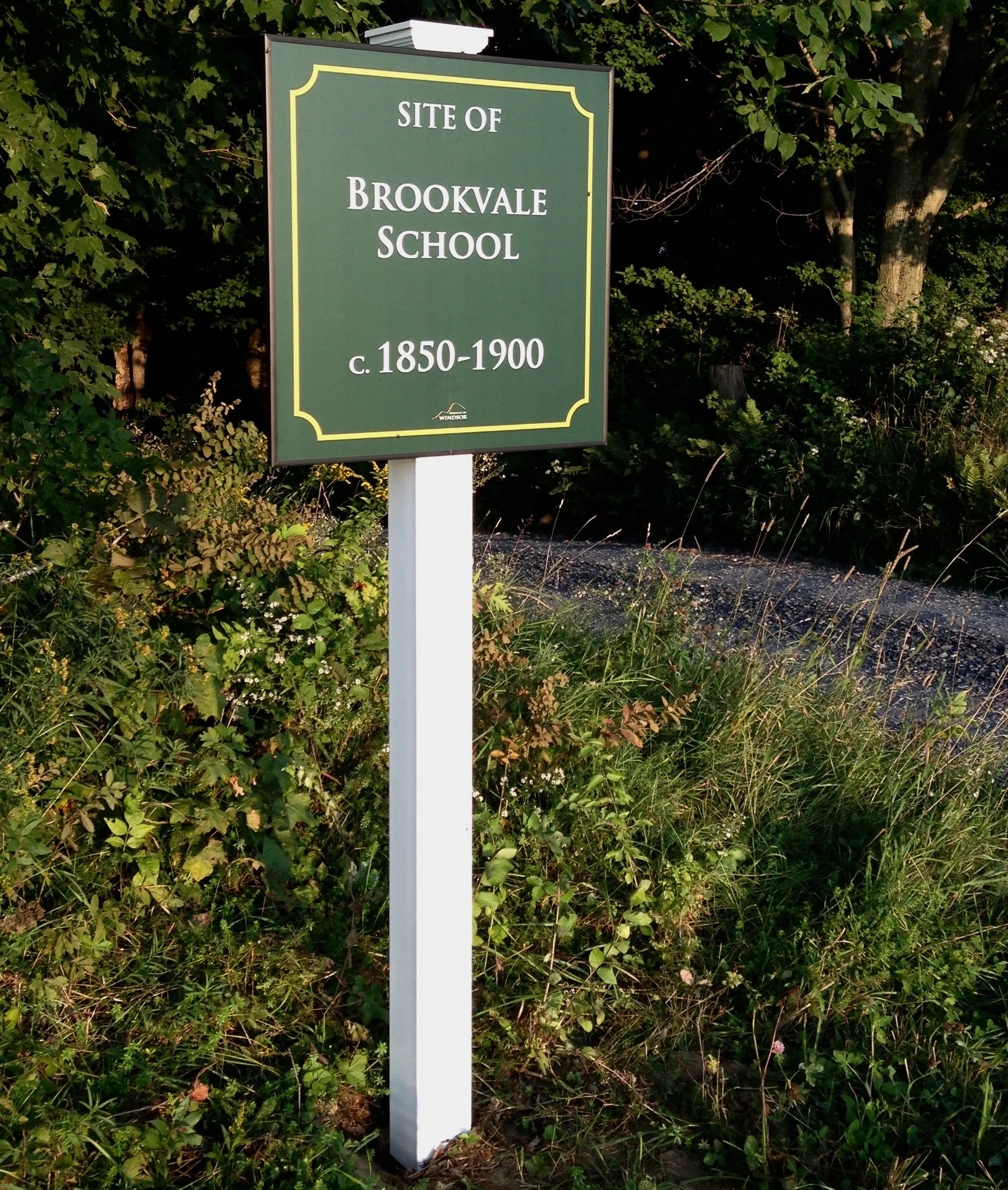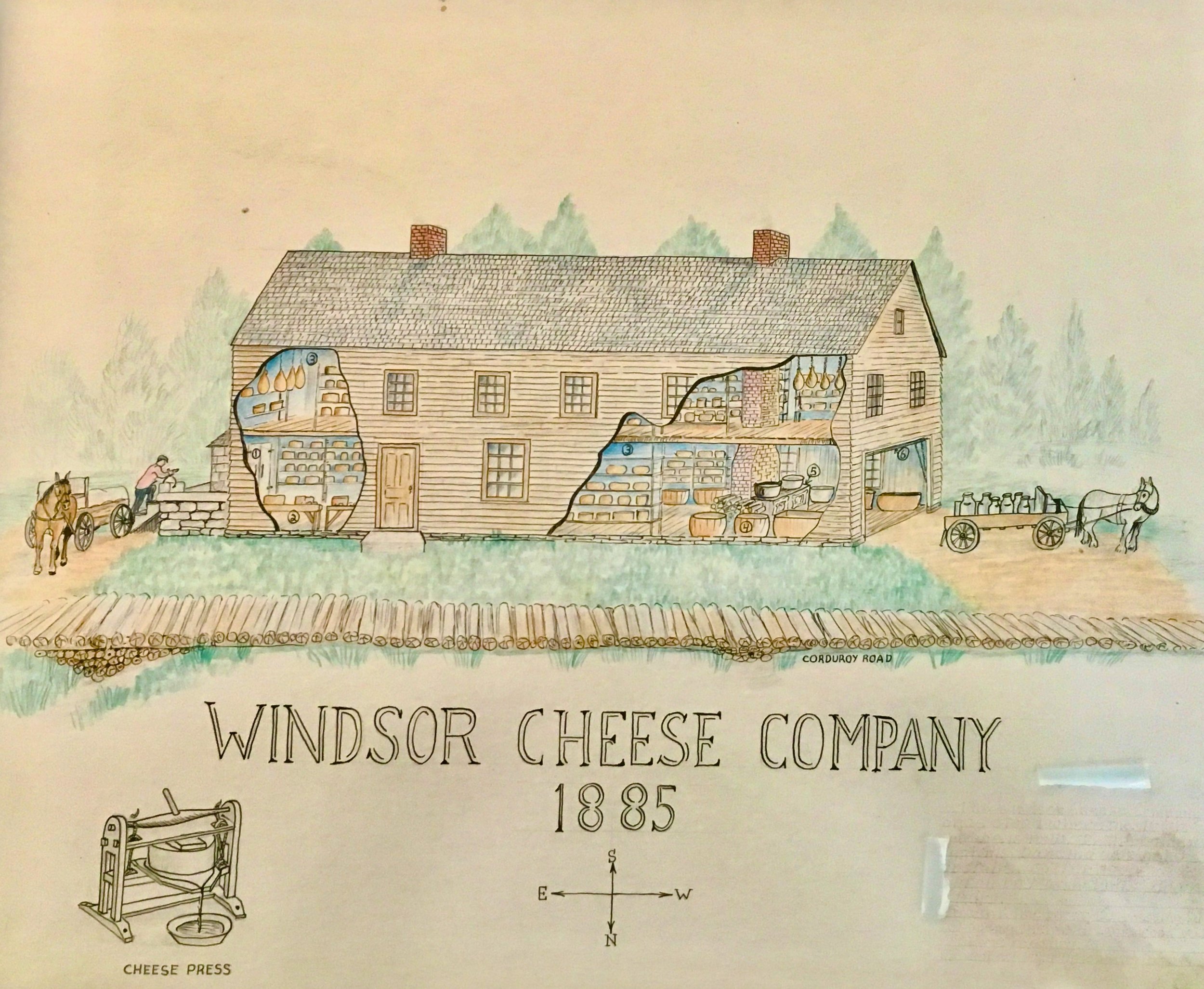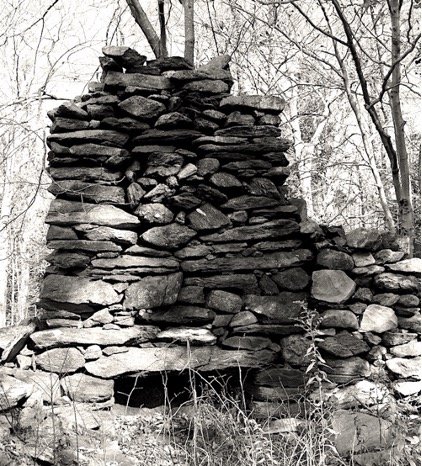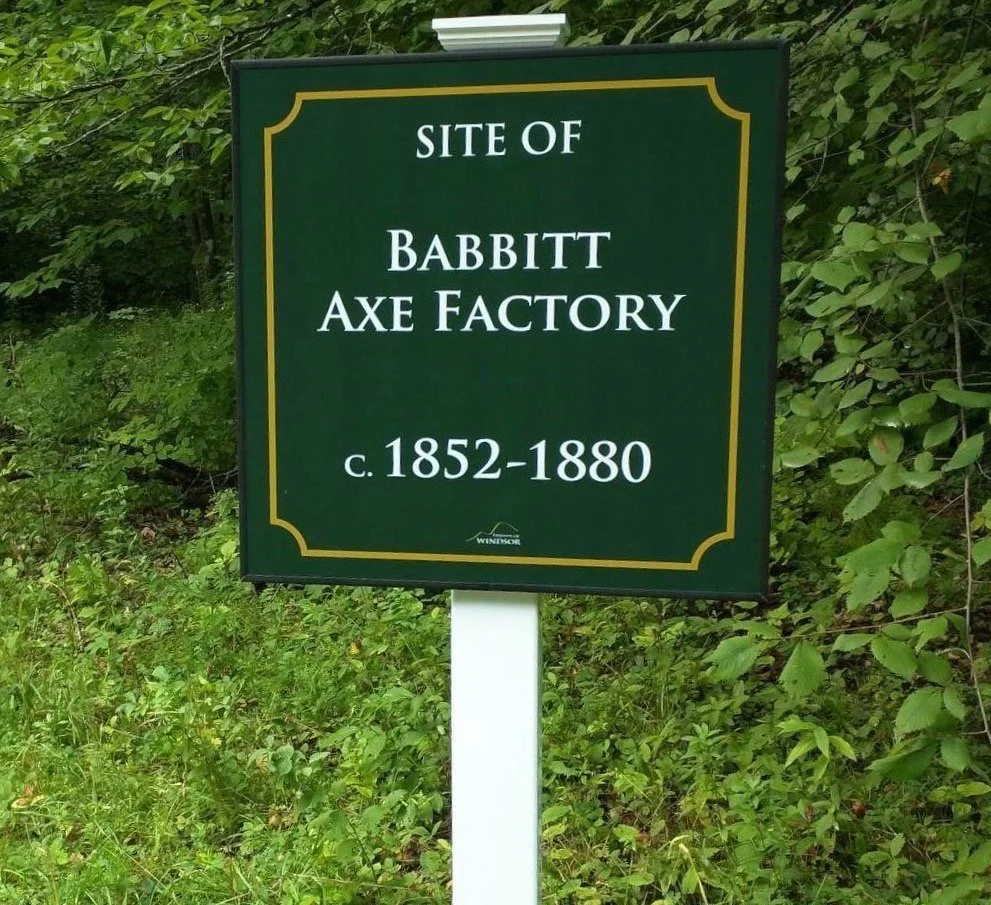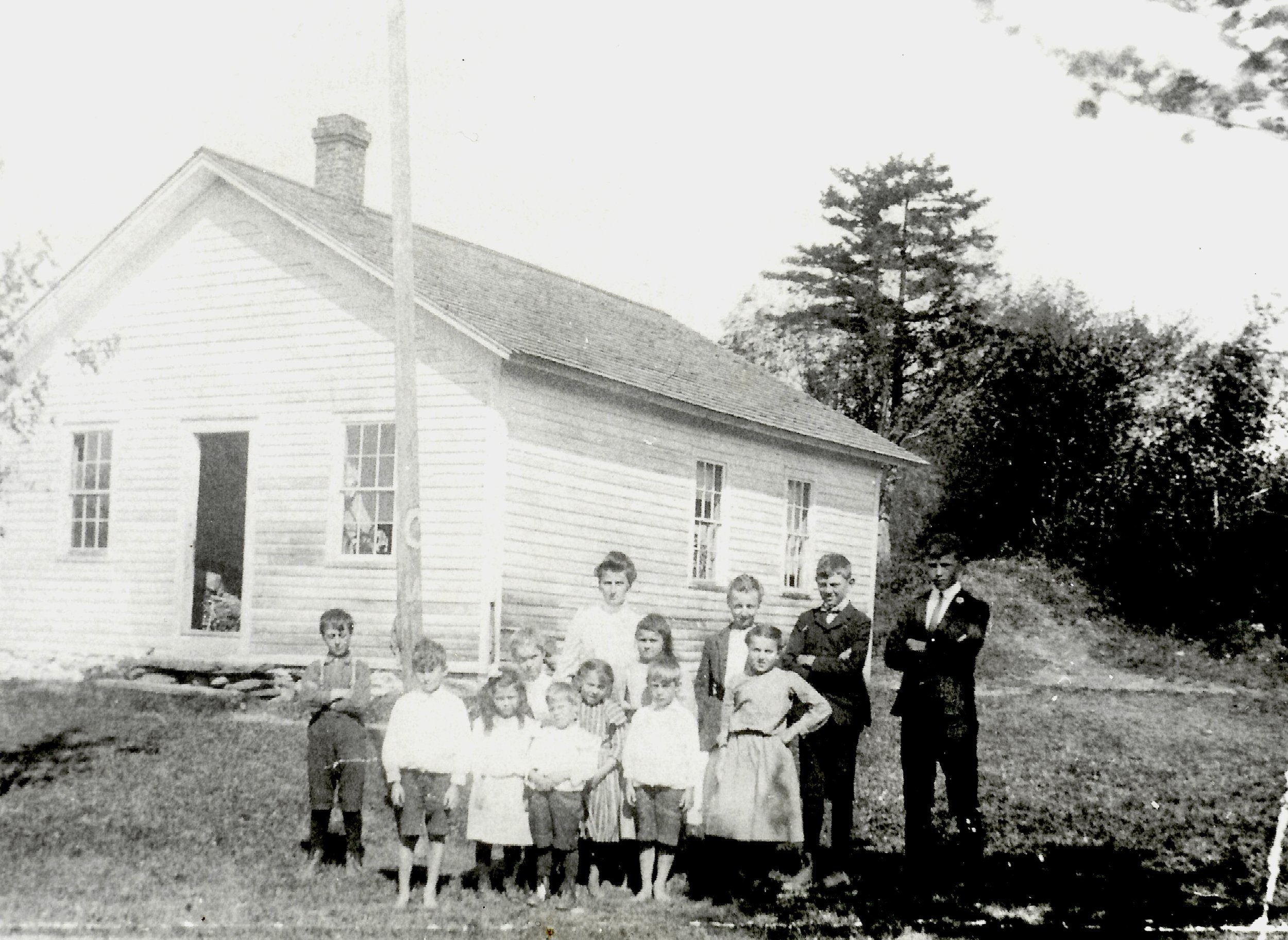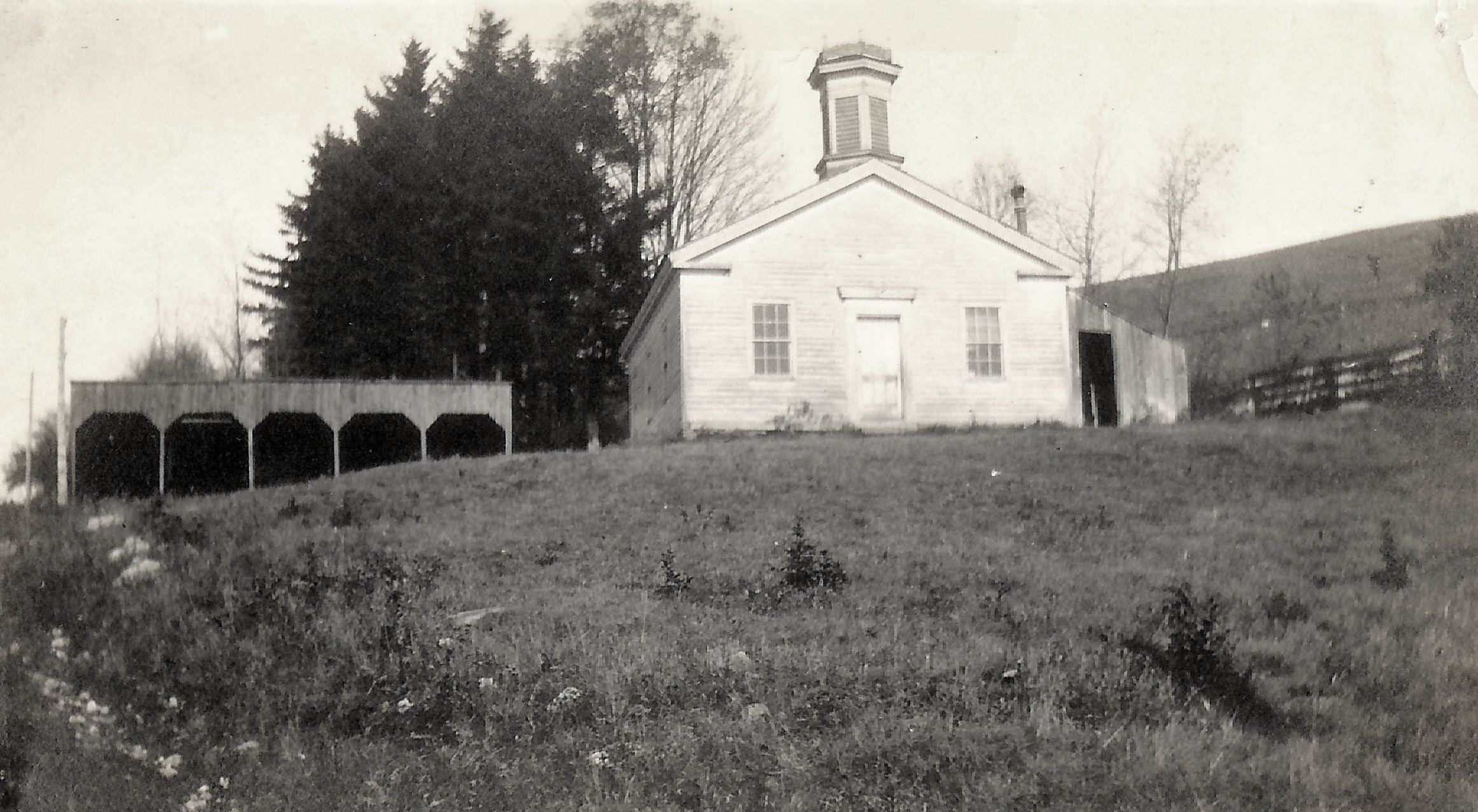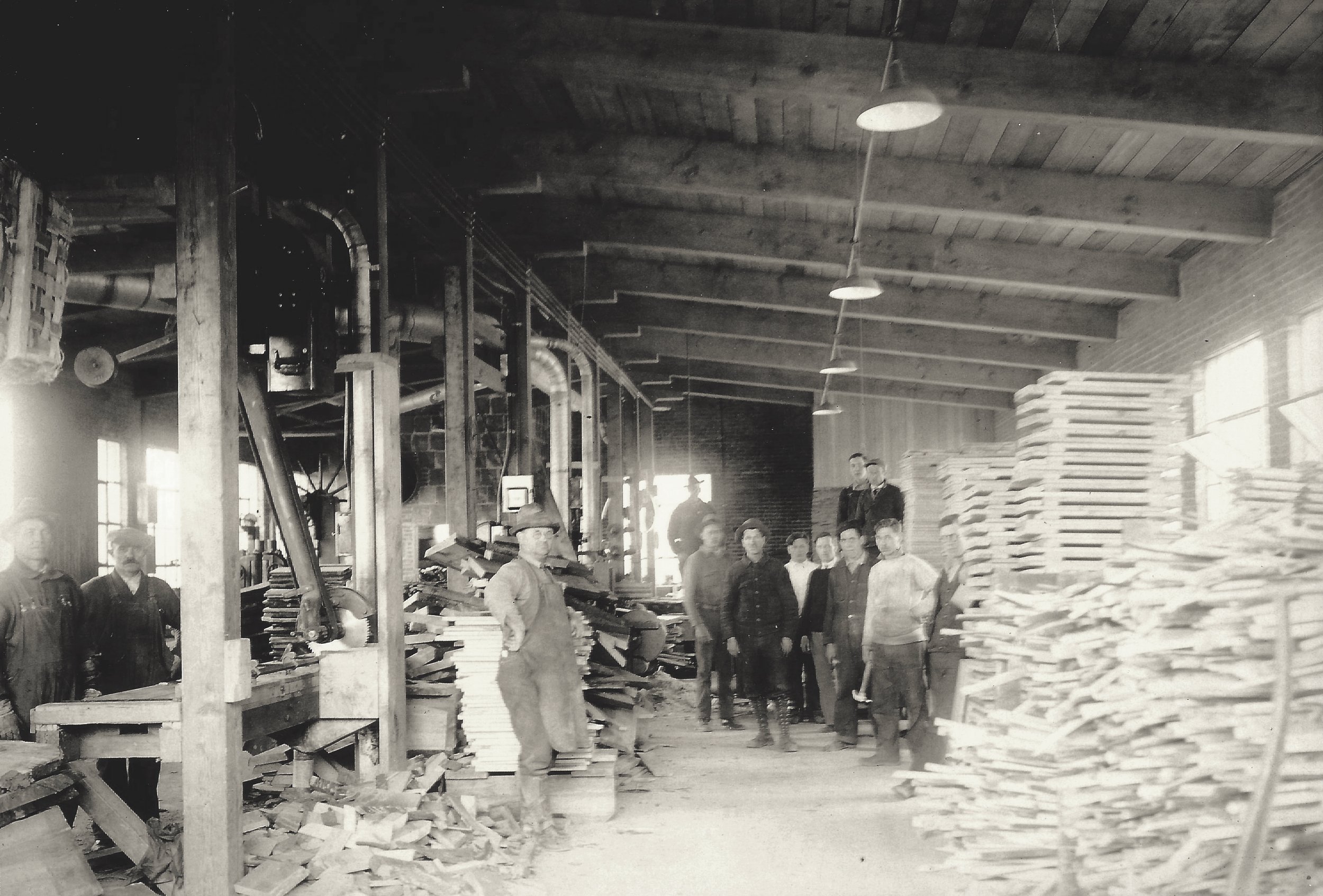Cultivating community in the windy hills of western Massachusetts
1. Jerome Estes Store & Post Office (1895-1919)
(On porch, right to left, Stella Estes, Mary Estes, Avery Miner. In road, Arlene Estes.)
Jerome A. Estes established a general store on this site in 1895. It burned to the ground in 1919 after being struck by lightning and Estes moved his store across the street. In 1928, Jerome’s nephew, Ralph L. Estes, took over proprietorship for 11 years and it was operated by subsequent generations of the Estes family until 2003, when it became Sangar’s Store.
2. Berkshire Summit House & Tower (1930-1978)
Berkshire Summit House & Tower opened in 1929, operated by North Adams businessman Georgie Phelps. After the state designated Route 9 as “The Berkshire Trail” in 1919, automobile tourism through Windsor grew. Berkshire Summit House featured a 40-foot wooden observation tower and sold lunches, postcards, souvenirs, and gasoline. The tower was blown over in a windstorm in 1932.
3. Hill Cemetery (Est. 1774)
Hill Cemetery is Windsor’s oldest cemetery and is believed to be the highest elevation cemetery in the state of Massachusetts. It predates by several years the town’s first meetinghouse, which stood nearby. Among those buried here are 11 veterans of the American Revolution, 4 veterans of the Civil War, and 4 veterans of World War II.
4. Northwoods School (1880-1920)
Northwoods School was also known as #5, out of 9 schools established in Windsor during the one-room schoolhouse era. Viva Bates, future headmistress of Crane Community School, taught here for three years, remembering, “We made our ink from powder, sharpened pencils with a small pen knife…I loved it all.”
5. No. 9 School (1900-1920)
# 9 School was one of the last one-room schools to be built in Windsor. From the Windsor historical archive, some notes from district 9 proceedings: in 1809 “Voted to board the school master, Enos Hathaway, equal part of two months this winter upon Mr. Hathaway (his father);” in 1842, it was voted that the old bachelors should accompany the teacher to and from her boarding place every morning and night, in exchange for a cord of wood each.
6. Hemlock Hill School (1850-1913)
Hemlock Hill School was also known as Southwest School. It was #3 out of 9 schools established in Windsor during the one-room schoolhouse era. A description dated 1897 tells of ceiling and walls made of hand-planed pine boards, with benches and desks made of rough boards, painted blue. It was discontinued in 1913.
7. Cady Sawmill (1850-1938)
Cady Sawmill was active on this site from 1850 to 1938. Windsor’s deep woods were a source of lumber that fueled much of the town’s growth beginning in the 1760s. At one time,there were nine sawmills operating in town, including the Cady family’s. Dennis Cady is seen standing in front.
8. Patterson Cider Mill (1881-1940)
Patterson Cider Mill operated from 1881 to about 1940. Small-scale cider making operations were common in Windsor, as were sugarhouses for making maple syrup. Pictured are Bill Patterson and Addison Tubbs, standing, with Theodore Loring, seated on cider barrel.
9. Brookvale School (1850-1900)
Brookvale School was open from 1850 to 1900. It was also known as #2, out of 9 schools established in Windsor during the one-room schoolhouse era. We have not found any photographs of this school.
10. Windsor Cheese Co. (1811-1910)
Windsor Cheese Company, built on this site in 1811, served as a community operation for area farmers to have their milk processed into cheese. Farmers received about 2 cents a quart for the milk and took the whey home to feed the pigs. In the winter months, when milk production was low, the factory was home to square dances and oyster suppers. The factory closed in 1910. (The drawing was made for the Windsor Historical Museum by local artist Olive Volsky.)
11. Helenscourt (1914-1985)
Helenscourt, a grand 24-room mansion with 10 fireplaces, a music room, map room, and library, stood on this site, surrounded by terraced gardens modeled after those at the palace of Versailles. It was the home of Helen Gamwell Ely and her husband, Lt. Col. Arthur D. Budd, who named the estate Notch View Farm. On his death in 1965, the property was deeded to The Trustees of Reservations.
12. Windsor Club House (1824-1905)
Windsor Club House was established around 1900 by Pittsfield’s Judge James M. Barker who purchased a farmstead in what is now Notchview to use as a sporting and social club for that city’s elite to “come to summer enjoyments, to picnic in the silences and splendors” of Windsor. The clubhouse – originally the home of Revolutionary War veteran Hezekiah Green – is gone but remnants of a stone picnic pavilion remain, uphill from this location.
13. Upland Farm (1905-1957)
13 Upland Farm was the site of an estate in the early 1900s that was home to General Alfred E. Bates (retired Paymaster General for the U.S. Army). Equipped with liveried coachmen, butlers, and maids, the expansive home hosted many large parties, including one at which Theodore Roosevelt was rumored to be a guest.
14. Shaw Cemetery (est. 1790)
Shaw Cemetery, established in 1790, is the largest of the town’s four cemeteries. The graves include those of nine men who fought in the American Revolution, along with five veterans of the Civil War, and one each of World War 1 and Korea. Members of the Shaw family are well represented, along with the Phillips, Allen, Miner, Ford, and Bates families.
15. Babbitt Axe Factory (1852-1880)
Babbitt Axe Factory began operations 1852 on this site where blacksmith Andrew Babbitt had acquired a small plot of land from his father-in-law, along with the right to erect a dam to harness the power of the West Branch of the Westfield River. In the years following the opening of the factory, a small village known as Babbittville sprang up in the surrounding area.
16. Bush Cemetery (est. 1798)
The earliest known gravesite in Bush Cemetery is that of the infant Emily Bird, aged nine months, in 1797. Luther Torrey, Revolutionary War veteran, was buried here in 1825, aged 92.
17. Bush School (1850-1936)
Bush School was the last of Windsor’s one-room schoolhouses to cease operations. Because of its remote location, the Bush School continued to educate students until 1936, long after the opening of the Crane School (now the Town Offices Building) in 1920 had started the process of consolidation.
18. Ancient Order of United Workmen Hall (1880-1915)
Known as the A.O.U.W. Hall, the steeple-topped building erected on this site in 1876 was originally built by two area families as a private school for their children, also serving as a community center, a place for church services, and a meeting hall for the East Windsor Grange. It later became the home of the Ancient Order of United Workman (A.O.U.W.), a fraternal organization dedicated to providing community and financial security for ordinary workers in the post-Civil War era. It was demolished in 1915.
19. East Windsor Cemetery (est. 1874)
East Windsor Cemetery, perched on the hill overlooking East Windsor, was established in the late 1800s and is still being used. Burial sites include those of Helen Gamwell Budd and Lt. Col. Arthur Budd (see Helenscourt), as well as Arthur and Lucian Ball, brothers of local inventor Charles H. Ball (See Ball Mill, #20)., and members of the Jenks, Jordan, Miner, Tournier, Harwood, and Tinney families.
20. Charles H. Ball Woodworking Mill (1895-1919)
The C.H. Ball Woodworking Mill, established on this site in 1895 by Charles Ball, produced wooden coat hangers, barrel staves, brush handles, lollipop sticks, meat skewers, knitting needles and lead pencils. At its height of production in 1924, the annual output of lollipop sticks was reported to be 100 million. Ball died in 1928 and the mill closed in the early 1930s.
Also Charles H. Ball, Making his Mark: https://www.friendsofwindsor.com/charles-h-ball-1
ADD SIDEBAR CONTENT HERE
